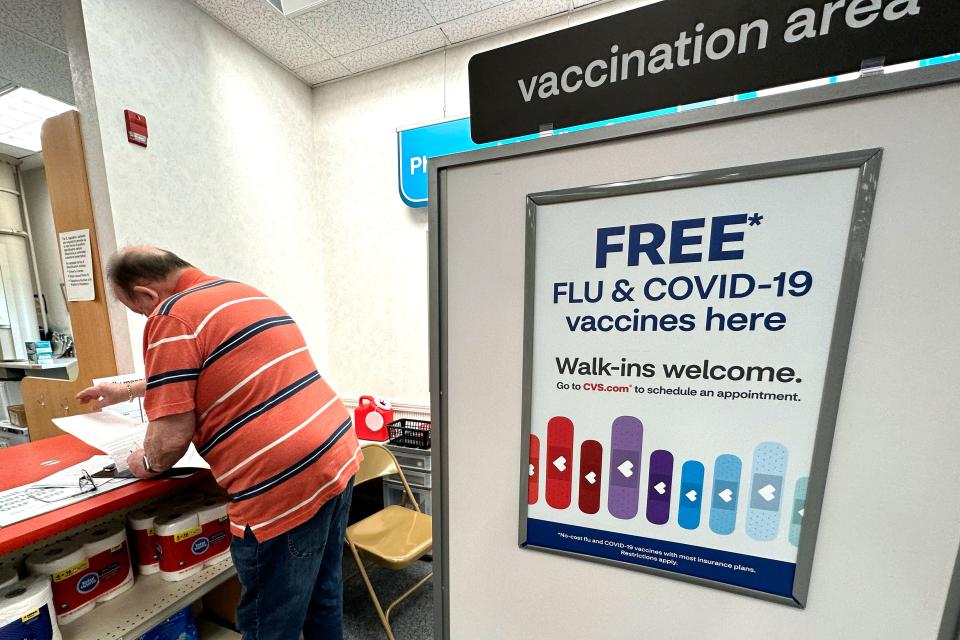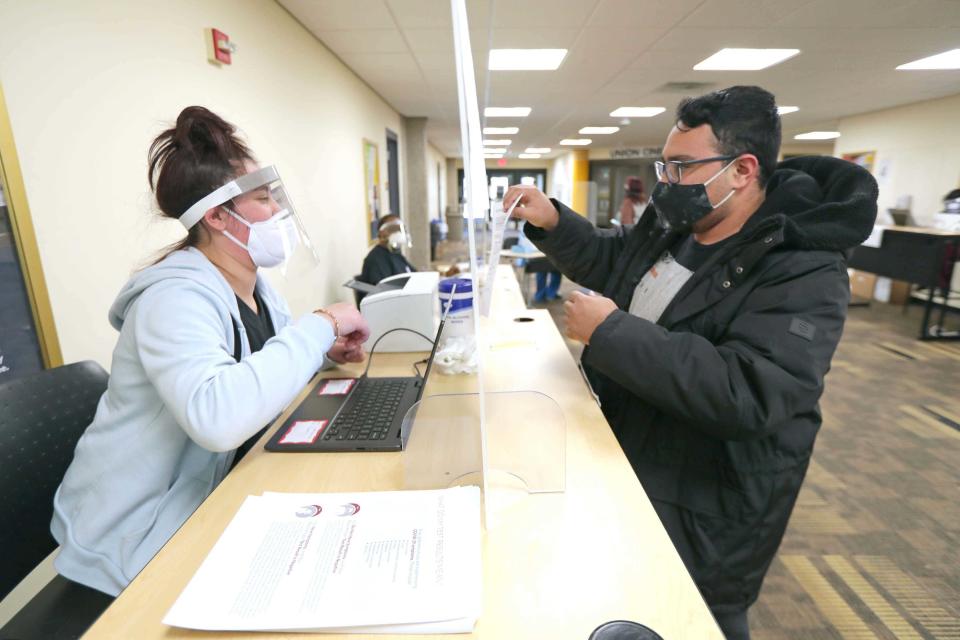The viruses that keep on giving: Flu, COVID cases up over Christmas, expected to keep rising
Christmas brought the flu and other respiratory illnesses to many Americans, as more than half the states in the U.S. reported widespread sickness before the New Year.
Holiday gatherings could result in reports of the continued spread of illnesses over the coming weeks, as this data from the Centers for Disease Control and Prevention, posted Friday, which accounts for sicknesses just through Dec. 30.
Across the U.S., 38 states reported high or very high levels for respiratory illnesses with fever, cough and other symptoms, the CDC reported. That’s up from 31 states the week before.
The data includes other illnesses such as COVID-19, RSV (respiratory syncytial virus) and other viruses, as well as flu. But flu is registering the largest increase in illnesses, according to the CDC.

Positive lab tests for influenza rose to 17.5% of all tests given during the week of Dec. 24, up slightly from the previous week.
Compared to past years, this is a moderate flu season so far, Alicia Budd, the team lead of the CDC's National Surveillance and Outbreak Response Team, told The Associated Press. Still, “we expect it to be elevated for several more weeks,” she said.
Interpreting flu reports during and after the holidays can be tricky, Budd added, because people are traveling, schools are closed, and some may be less likely to seek medical care from illness.
It's been 4 years since COVID hit. Here's what's happening to prevent the next pandemic.
States in the US with the most flu activity
Very high flu activity levels (21 states and New York City): Alabama, Arkansas, California, Colorado, Georgia, Idaho, Kentucky, Louisiana, Maryland, Massachusetts, Mississippi, New Jersey, Nevada, North Carolina, New Mexico, Ohio, South Carolina, Tennessee, Texas, Virginia, Wyoming, and New York City.
High flu activity (17 states): Arizona, Connecticut, Florida, Illinois, Indiana, Kansas, Maine, Michigan, Montana, New Hampshire, New York, North Dakota, Pennsylvania, Rhode Island, Utah, Washington, and Wisconsin.
Moderate flu activity (5 states): Hawaii, Iowa, Missouri, Oklahoma and West Virginia.
Low flu activity (6 jurisdictions): Delaware, Hawaii, Nebraska, Oregon, Vermont, and Puerto Rico.
Minimal flu activity (2 jurisdictions): Minnesota and the Northern Mariana Islands.
The latest findings of flu activity from the CDC's Influenza-like Illness Activity Level Indicator (can be found here.
COVID-19 also on the rise at year's end
COVID-19-related deaths, hospitalizations and visits to the emergency room rose during the week, too, but not as high as in past years, the CDC reported. However, COVID-19 is putting more people in the hospital than flu, CDC data shows.
A new version of the coronavirus, called JN.1, has grown to become the dominant variant making up nearly two-thirds (61%) of cases in the U.S., according to the CDC released the latest data Friday. Health officials say there’s no evidence JN.1 results in more severe disease than other recent variants, but it may be more easily spread.
Feeling sick?: COVID and flu cases are on the rise. Here's how to spot the difference.
What are the symptoms of the flu and COVID-19?

Some of the symptoms of the flu and COVID-19 may be similar – and you could have no symptoms to severe symptoms with either, the CDC says. If you have symptoms, it's best to get tested. These symptoms can be common to both illnesses, according to the CDC:
Fever or feeling feverish/having the chills
Cough
Sore throat
Shortness of breath or difficulty breathing
Fatigue (tiredness)
Runny or stuffy nose
Muscle pain or body aches
Headache
Vomiting
Diarrhea (this is more frequent in children with flu, but can occur in any age with COVID-19)
Change in or loss of taste or smell (More likely with COVID-19)
Contributing: The Associated Press
Follow Mike Snider on X and Threads: @mikesnider & mikegsnider.
What's everyone talking about? Sign up for our trending newsletter to get the latest news of the day
This article originally appeared on USA TODAY: COVID and flu cases rose over Christmas holiday and still rising

